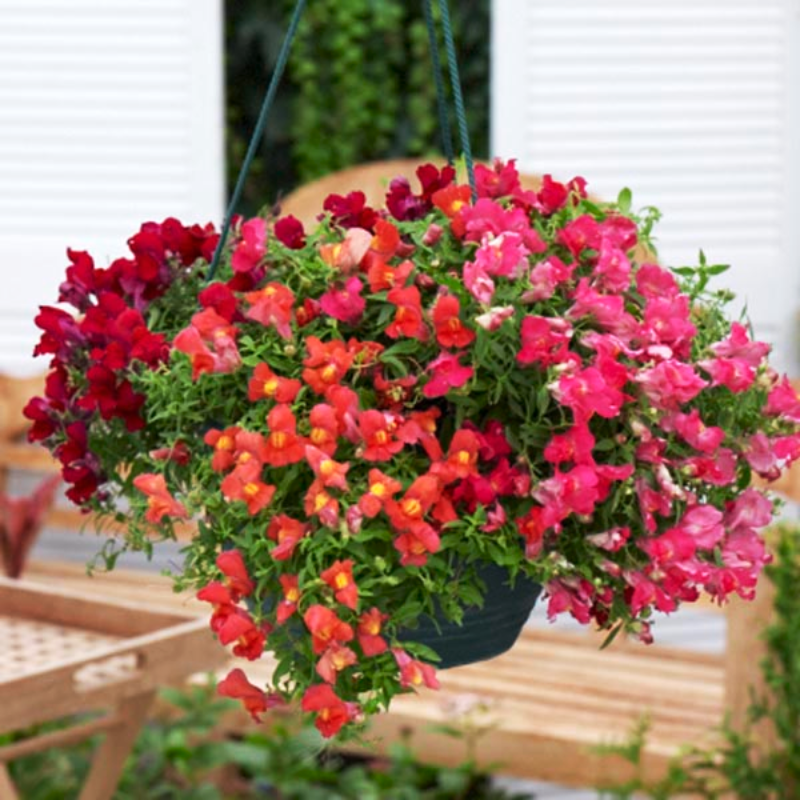- Species and varieties: Antirrhinum, commonly known as snapdragons, belong to the family Plantaginaceae. There are numerous species and varieties of snapdragons, including Antirrhinum majus (common snapdragon), Antirrhinum braun-blanquetii, and Antirrhinum siculum. Varieties range in color from white, yellow, pink, red, and purple, and can be found in both dwarf and tall forms.
- Hybrid or heirloom: Snapdragon seeds can be both hybrid and heirloom. Heirloom varieties are open-pollinated and have been passed down through generations, while hybrid varieties are bred for specific traits such as color, size, and disease resistance. Popular heirloom varieties include 'Rocket Mix' and 'Madame Butterfly', while hybrids like 'Liberty Classic' and 'Sonnet' are also widely grown.
- Pruning and training: Regular deadheading of spent flowers encourages continuous blooming. Pinching back the stems when the plants are young promotes bushier growth. Taller varieties may require staking to prevent them from toppling over.
- Fertilization needs: Snapdragons benefit from a balanced, all-purpose fertilizer applied at planting time. During the growing season, a monthly application of a water-soluble fertilizer can help maintain vigorous growth and abundant blooms. Avoid over-fertilizing, as this can lead to excessive foliage growth at the expense of flowers.
- Hardiness zones: Snapdragons are suitable for USDA hardiness zones 7-10. In cooler climates, they are often grown as annuals, while in warmer regions, they can be grown as short-lived perennials.
- Climate requirements: Snapdragons prefer cool weather and thrive in temperatures between 60-75°F (15-24°C). They require full sun to partial shade and well-drained soil. In hot climates, they may need some afternoon shade to prevent wilting.






